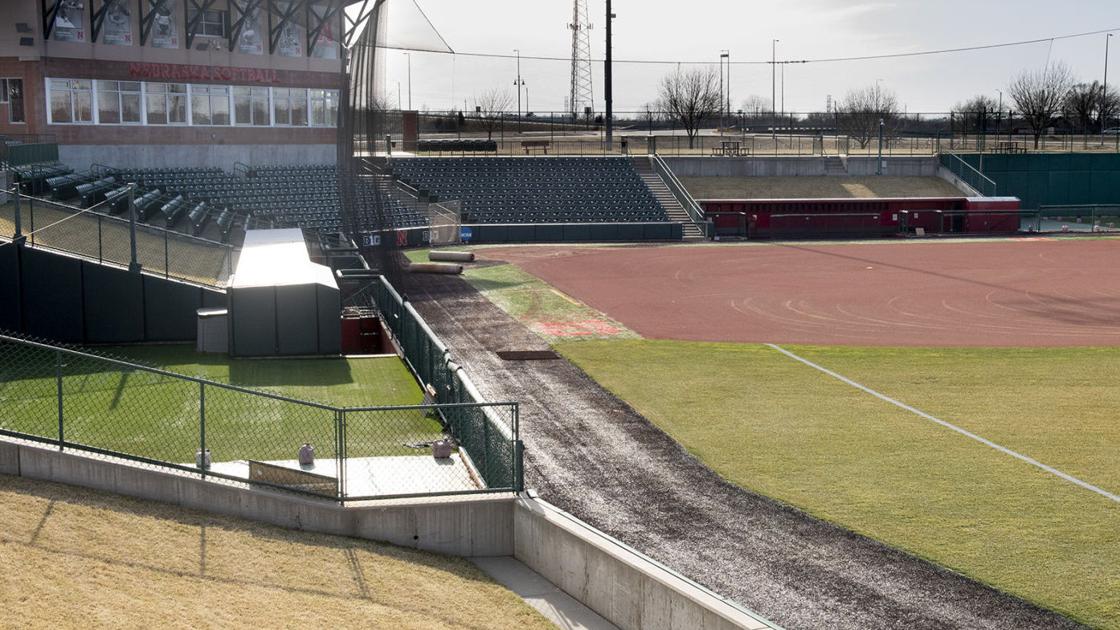
Bowlin Stadium sat empty during the 2020 season after the college softball season was canceled on March 12.
GWYNETH ROBERTS, Journal Star file photo
When Fred Hoiberg went to sleep in an Indianapolis hotel room bed on March 10 last spring, he had an idea that his first trip to the Big Ten men’s basketball tournament as a head coach would be an interesting one.
After all, NU entered play on a 16-game losing streak capped by a demoralizing 107-75 defeat at Minnesota two days earlier. Not only that, but earlier that day he and his staff had finalized plans to bring along two Husker football players as substitutes because his roster had been whittled by injuries and attrition down to seven healthy players.
Like most coaches, Hoiberg had been dialed in on his team and essentially his team only for months, eschewing the news and any other distractions as he navigated through his first year as the head coach at the school where his grandfather once manned the sideline.
The Huskers were set to open the tournament on Wednesday night with an Indiana team they hadn’t seen since Jan. 19.
Not only had the Hoosiers undoubtedly changed since then, but the world had too, though that was a long way from Hoiberg’s mind on that Tuesday night.
Two days after Nebraska and Indiana played in January came the first confirmation of a COVID-19 case in the United States, though we’d learn later the coronavirus had likely been on our shores for months. Early in February, planeloads of Americans from China were brought to Omaha and transferred to Camp Ashland for weeks of quarantine. On Feb. 29, the first confirmed death in the United States.
Only four days before the Huskers arrived in Indianapolis did the state of Nebraska confirm its first case. Lincoln itself would go until March 20 before confirming its first.
The effects of the pandemic were drawing closer and closer to home when Hoiberg’s head hit the pillow that night, but they still hadn’t arrived in full force.
Then he woke up Wednesday morning, March 11. He didn’t feel well.
This week marks one year since the sports world essentially went dark in a matter of days. Over the past 12 months, almost nothing has looked normal.
Some sports and leagues returned sooner than others, but everybody felt the impact. There was no NCAA basketball tournament and no spring college sports, period. Major League Baseball closed up shop only to return for a truncated season that nearly went off the rails in its first week. The NBA staged the end of its season and postseason in a Disney World bubble. The NFL played a season in front of mostly empty stadiums and the college football season unfolded to varying degrees and despite dozens upon dozens of cancellations, postponements and COVID-19 outbreaks around the country.
It all started, though, with a dizzying three days in mid-March that began with cautious optimism and a proceed-as-normal attitude and ended with the entirety of college athletics shut down.
By about 9:30 p.m. Wednesday, in a dead-silent postgame locker room tucked in the bowels of Banker’s Life Fieldhouse in Indianapolis, Nebraska offensive lineman Brant Banks couldn’t help but wonder, “How did this happen?”
The freshman football player from Houston made the basketball trip along with quarterback Noah Vedral as reinforcements for Hoiberg’s shorthanded team. Banks, 6-foot-7 and 300 pounds, had been so dialed in on the late stages of the game — he and Vedral played down the stretch of an 89-64 loss to IU — that he didn’t realize what had happened to Hoiberg, let alone that the scene unfolding around him played a central role in sports’ first true reckoning with the coronavirus’ havoc-wreaking capability.
“I’m going to be honest, I didn’t realize Coach Hoiberg wasn’t out there until after the game we went in the locker room and they said, ‘Everybody get off your phones. We have to quarantine here,’” Banks told the Journal Star this week. “They said everything was fine and they were trying to keep us all calm, but I hadn’t even realized Coach Hoiberg had left, so it was quite a shock.”
Outside the walls, the sports world as we knew it had been staggering and listing for hours. The NCAA announced at 3:30 p.m. Central time that the NCAA Tournament would be played without fans in arenas. The Big Ten announced the same for the final four days of its conference tournament a couple of hours later, though fans were still allowed in the building Wednesday night.
“(NU athletic director Bill Moos) and I, like everyone in Indianapolis, were at St. Elmo’s Steakhouse,” NU senior deputy athletic director Garrett Klassy recalled this week. “And in there was (athletic director) Barry Alvarez from Wisconsin. We were having some conversations and we didn’t really know what to expect.
“By the time we got to the arena, we’re in the athletic department suite and next thing you know, President (Donald) Trump is on the TV shutting down the borders.”
Hoiberg hadn’t felt good since he woke up, but his condition worsened as the day progressed, so he saw the Big Ten’s on-site physician at the arena.
“He checked my vitals: everything was normal; my oxygen levels were normal,” Hoiberg said recently. “He X-rayed my lungs. I think at that time that was kind of the telltale sign, if you did potentially have it, was how your lungs were feeling. And everything was normal there. The X-ray was perfectly normal; my lungs were clear.
“So he cleared me to coach.”
Shortly after NU and IU tipped off, Michigan and Ohio State both canceled their spring football games and suspended all recruiting activity.
One of the last vestiges of normalcy: Red Panda performed at halftime, unicycling and flipping cups and bowls into stacks on her head effortlessly.

Nebraska takes on McNeese State without fans on Nov. 25 at Pinnacle Bank Arena.
FRANCIS GARDLER, JOURNAL STAR FILE PHOTO
Six minutes after the Huskers’ second half began, though, the NBA announced it was suspending its season, effective immediately, following confirmation that Utah Jazz center Rudy Gobert tested positive for the virus. NU players and coaches found out a short time later on the bench.
Hoiberg continued to feel sicker.
Fifteen minutes after the NBA announcement, Big Ten Network cameras showed Hoiberg looking visibly ill, wiping sweat off his brow and resting his head on his wrist while assistant coach Armon Gates applied hand sanitizer in the seat next to him.
“(NU communications official) Shamus (McKnight) actually came down and said, ‘You need to leave the floor,’” Hoiberg said. “And I said, ‘Why?’ I said, ‘What did I do?’ And he said, ‘No, this isn’t a debate.’
“And then an official came down and said, ‘You need to leave now.’
“So I gave my clipboard to (assistant coach Doc Sadler) and walked off the floor where there was a wheelchair waiting for me and an N95 mask. They wheeled me off and took me into the ambulance, and I’m just thinking, ‘What is going on here?’”
Hoiberg was transported to Eskenazi Hospital where, for the second time that day, he was evaluated for COVID-19.
Back at the arena, players sat in quiet and waited for updates on their coach’s health and their next steps. All told, they did not leave the locker room for more than 90 minutes after the game ended.
In such surreal circumstances, the mind tends to wander between the swirl of chaos and the much more mundane.
“Honestly, we were a little hungry,” Banks recalled. “They brought us some chicken strips, which was nice.”
The bigger picture, though, loomed without any clear answers.
“We were freaking out,” Banks said. “That was before COVID had really hit America. I mean, I’m sure it had hit, but we didn’t know anyone that had had COVID, and we’re sitting in the locker room like, ‘Oh, my God, we all probably have COVID.’ It was a scary thought. We weren’t too excited about that. …
“All I had heard was that people were dying from it. I hear that our coach might have it, who I was just with him in his office 24 hours before that, and I was like, ‘Oh, my God.’”
Banks and the rest of the Huskers finally started filtering out of the locker room about 90 minutes after the game ended, after Hoiberg had been released from the hospital.
By the end of the night, it became clear the coach, the Huskers and the Big Ten had been through an early COVID-19 scare, but not an outbreak. Even still, the scene left an indelible impression and, when combined with the NBA shutdown, served as a grim foreshadowing of the trouble to come.
“Looking back on it, it was just a surreal day, a surreal night, and I’m glad we made it through,” Hoiberg said.
On Thursday morning, as the basketball team — and, separately, the Hoibergs — flew back to Lincoln, the Huskers announced that all home sports events would be held without fans going forward. Then, the Big Ten canceled the remainder of its conference basketball tournament minutes before the day’s first game began.
Still, coaches and athletes tried to move forward. Mark Manning’s Nebraska wrestling team practiced normally in the morning and planned to leave the next day for nationals.
Will Bolt’s baseball team had beaten Northern Colorado, 8-1, on Wednesday afternoon and prepared to board a bus for Wichita State on Thursday afternoon. Radio broadcasters had already jumped in a car and started south.
Not only were several sports about to hit the road, but Nebraska had track and field athletes in New Mexico and its rifle team in North Carolina for NCAA Championships.
Nebraska football’s pro day went on as scheduled at 1 p.m. and, even as NFL teams began to pull scouts and executives off the road, 28 scouts from 22 teams watched the workouts.

Nebraska head coach Fred Hoiberg calls a play during the first half against Indiana at the Big Ten Tournament on March 11 in Indianapolis.
Associated Press file photo
At 3:15 p.m., the NCAA canceled all remaining winter championships and spring championships, too. Ten minutes later, while NU linebacker Mohamed Barry talked through his pro day workout with reporters at the Hawks Championship Indoor facility, the Big Ten shut down all sports through the academic year.
“The biggest thing is you’d rather be alive. You’d rather be healthy than anything right now,” he said. “Life is more precious than the things that we want. Life is a necessity.”
That meant shutting down immediately, a devastating blow, particularly for those who were about to compete on the biggest stage.
“I’m just at a loss for words,” Manning told the Journal Star after a 4 p.m. team meeting on March 12 in which he told his team its shot at a national title had been taken away. “It’s surreal. It happened so quick. Saturday and Sunday we’re wrestling the Big Ten Tournament and nobody saw this coming down the road.”
Klassy said NU’s senior staff met Thursday shortly after he and Moos got back to Lincoln to plan for what came next, but, “Really, it was a lot of guessing. We had to make decisions based on the information that we had, which really wasn’t a lot at that point.”
By the end of the day Friday, all official team activities were off in the Big Ten in addition to all competition. Spring ball for the football team was over. Banks never even got to put pads on, since he and Vedral missed two days of the acclimation process to travel with the basketball team.
Banks said coach Scott Frost called a team meeting and said, essentially, that spring ball was off and nobody knew what was next.
“I don’t think anybody had any clue exactly what was going on,” NU football chief of staff Gerrod Lambrecht said. “I don’t think anybody had a clue as to how things were going to proceed. People were just curious about how long the ‘shutdowns’ were going to last.”
Some of them are still in place. The NCAA instituted a recruiting dead period on March 13 that still hasn’t been lifted and won’t be until June 1 at the earliest.
Elsewhere in college athletics, the pandemic’s impact is only beginning to fade.
The Husker soccer team played at home on Thursday for the first time in 494 days. NU baseball took the diamond Friday — with no fans at the start of a shortened, conference-only season, against Purdue in Round Rock, Texas, of all places — for the first time in nearly a year. Manning’s team is again headlong into the postseason.
Normalcy, though, is still out there in the future.
NU’s revenue for the current fiscal year is expected to check in about $70 million less than the year before. Athletic Department employees have lost their jobs, been furloughed, navigated unprecedented uncertainty. Athletes have lost some of their precious few chances to compete, had their futures altered, changed the patterns of their lives to try to keep the virus at bay and play the sports they love.
Even that sacrifice pales in comparison to the staggering numbers across the country and around the world, numbers like 2.5 million deaths worldwide, 522,000 in the United States, 2,222 in Nebraska and 221 in Lancaster County, unprecedented unemployment rates and untold businesses lost.
A grinding recovery continues across the country this spring as deaths and hospitalization numbers decline, vaccinations accelerate and restrictions on businesses ease further. Locally, NU President Ted Carter said recently he is aiming to be able to fill Memorial Stadium this fall. That would mark a major victory and a long time coming. Still, as the march toward a new normal continues, the force and speed with which the sports world was thrown into chaos one year ago, on March 11, is still is difficult to comprehend.
“It all seemed like it just came crashing down at that point,” Klassy said. “For being a person who, at that point, didn’t realize and didn’t know how serious it was, it all changed in about an hour.”
— Chris Basnett contributed to this story.
Contact the writer at pgabriel@journalstar.com or 402-473-7439. On Twitter @HuskerExtraPG.
Get local news delivered to your inbox!

Must See
-
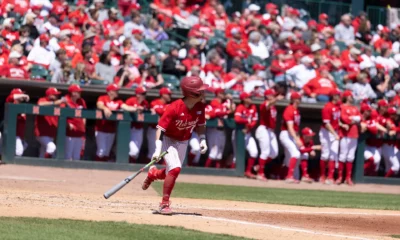

Baseball
/ 3 days agoHuskers Command Series Victory with a Resounding Win
In a spectacular show of force, Nebraska equaled its highest run tally of the...
-


Men's Gymnastics
/ 4 days agoHuskers Garner Five All-Americans at NCAA Gymnastics Finals
In Columbus, Ohio, the Nebraska men’s gymnastics team concluded their season with an impressive...
-
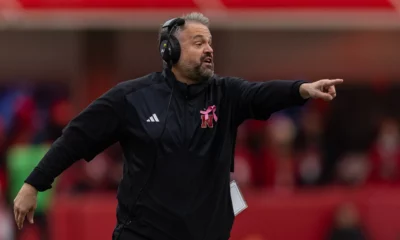

Football
/ 7 days agoCoach Rhule Reflects on Spring Practice and Transfer Portal
Nebraska’s football head coach, Matt Rhule, took some time to address the media after...
























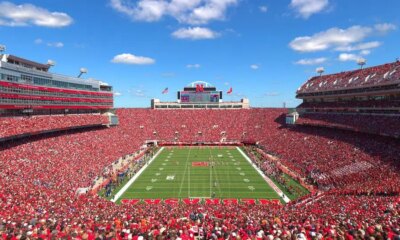



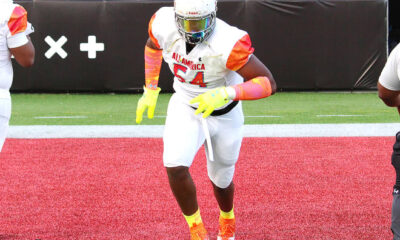

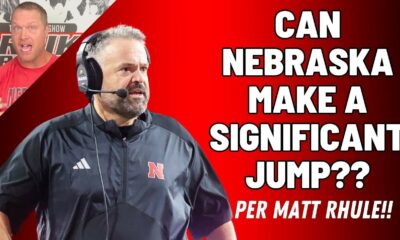

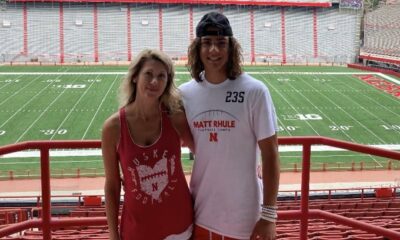

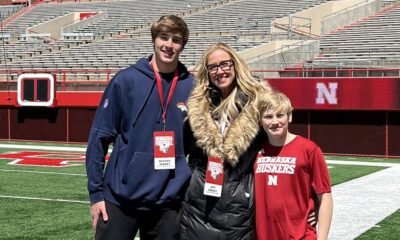





You must be logged in to post a comment Login